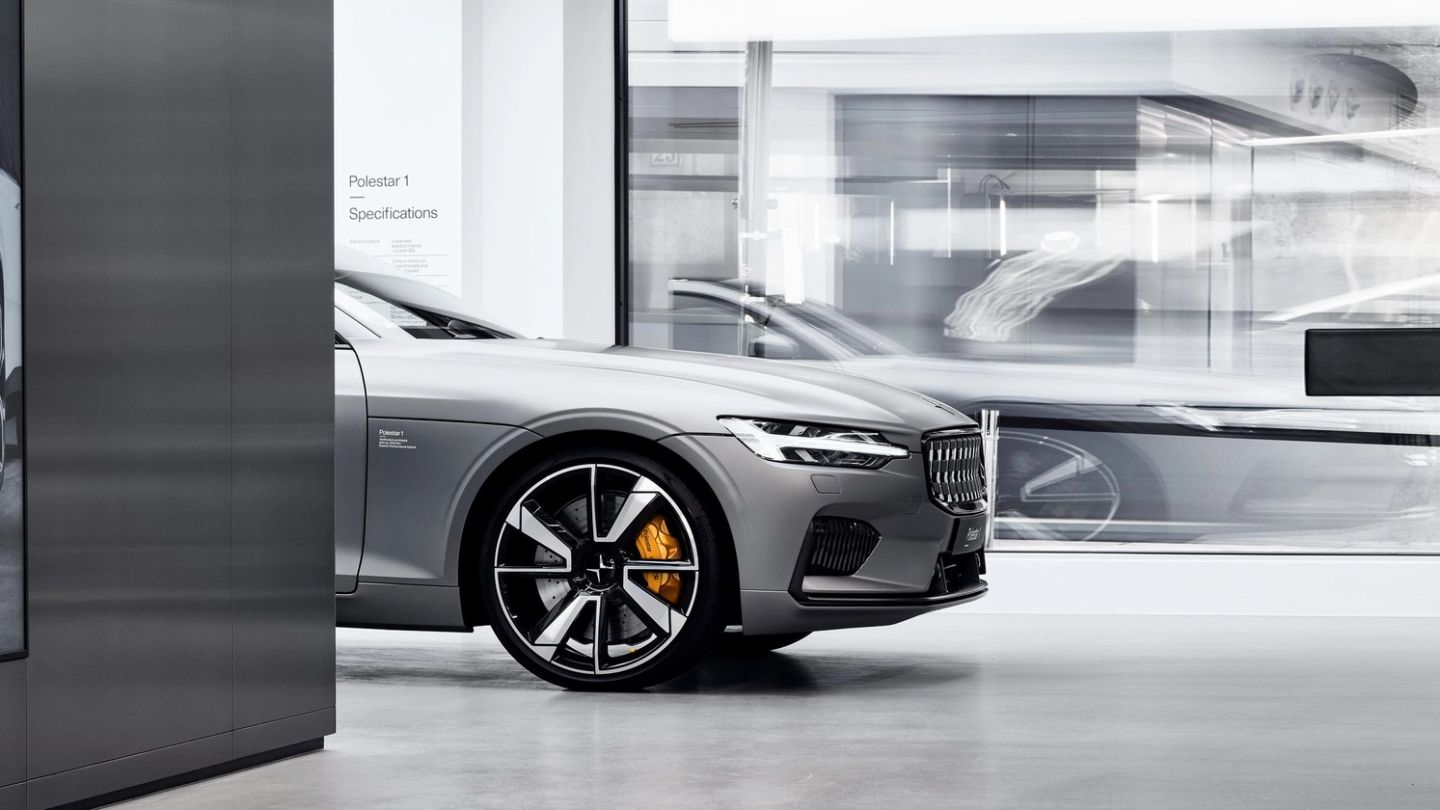

Words: Jonathan Wells
Last year, we took a trip inside Tesla’s European mega-factory. In Tilburg, an industrial city two hours south of Amsterdam, Elon Musk’s pioneering, futuristic and frequently troubled brand builds 120 cars every single day. From the Model S to the Model X, Tesla is considered the gold standard of electric carmaking. Or, at least, it was.
Push further north, and you’ll find the Volvo-owned Polestar looking to put a wobble in the wheels of Tesla’s electric monopoly. With a focus on performance, the new brand on the block is championing refined electric motoring and cutting-edge technology; leading the charge in a new era of eco-driving. But, by employing a new business model, Scandinavian chic and a truly revolutionary powertrain, can Polestar rebuild the electric car?
Where did Polestar come from?
Founded in Sweden in 1996, Polestar first came to prominence as Flash Engineering, a company that built Volvo’s touring cars for the Swedish Touring Car Championship. As the years went on, the cars became more and more technologically advanced, and in 2005, owner Christian Dahl changed the company’s name to Polestar — a moniker chosen to represent the frozen north of Sweden.
By 2007, Polestar had developed a new bio-ethanol race engine for championship, becoming one of the world’s first race teams to compete with an environmentally-friendly fuel. This green kick continued in 2011, when the brand created a racing engine based on Volvo’s groundbreaking Drive-E powertrain. And this glimpse into the eco-future of motoring was the only incentive Volvo needed to invest further into the brand; it bought out Polestar in 2015.
Two years ago, in 2017, the newly minted Volvo/Polestar powerhouse announced plans to create high-performance electrical cars for the road rather than the racetrack. Using the might of Volvo and the know-how of Polestar, the company was to launch a genuine, credible competitor to the offerings of dedicated electric car brands.
The Polestar 1 is a new breed of hybrid

This month, the first Polestar cars hit the road. With a less-than-inspirational name — but a powertrain electrifying enough to make up for it — the Polestar 1 is based on Volvo’s Concept Coupé from 2013, and runs on a hybrid powertrain that spans from the front to the rear of the whole car. It may not be fully electric just yet, but it’s an important first step before the brand shifts gear into electric-only vehicles.
In terms of design, it looks a little like a de-badged Volvo — and is the brainchild of Thomas Ingenlath, who has previously realised Audis, Volkswagens and *ahem* Škodas. But we don’t mind the boxy look. It’s reliably stocky, looks practical without being stuffy and even has a whiff of Ford’s latest Mustang about it — and that can never be a bad thing.
The hybrid engine is also a step in the right direction. The two twincharged petrol engines fire up 326 horsepower, and the two electric motors that power the rear wheels add another 232 horsepower. If that wasn’t enough, there’s a handful more horsepower produced by the integrated starter generator motor, giving drivers a total of 629 horsepower. For a fledgling brand, these are impressive numbers.
And the Polestar 1 is all about impressing. Engine aside, the cabin is a five-star experience; with a panoramic glass roof, handcrafted leather detailing and a carbon fibre wing of an instrument panel from which you can control a Bowers & Wilkins sound system, portrait touchscreen and Öhlins Continuously Controlled Electronic Suspension.
The car isn’t the only game changer
While the Polestar 1 itself may be important, this isn’t the only way the brand is rebuilding the electric car. The company’s pioneering business model is also revolutionising the sector, and has taken a whole new approach to the market. Subscription, rather than outward purchasing, is the primary way to buy — wherein the cars will be offered as an all-inclusive single monthly payment.
And Polestar appears to have thought of everything, with this monthly fee including everything from maintenance and insurance to roadside assistance and pick-up and delivery services. Not only that, all orders and transactions are made completely online, or — for an even more modern touch — via the Polestar app.
What does the future hold for Polestar?
Whether the brand makes a dent in Tesla’s reputation remains to be seen, but early reviews are in for the Polestar 1 — and they appear to be principally positive. The real test, however, will come when the Polestar 2 — the brand’s first fully electric vehicle — rolls silently off the assembly line in the next couple of years.
There were only ever intended to be 1,500 Polestar 1 cars created, but the Polestar 2 will see the company ramp up production to a viable volume. At £60,000, the second model is not an overly cheap option, but still comes in around £20,000 less than Tesla’s Model S.
For now, Polestar is still considered the new player in the electric game. But, with beginnings in petrol, dabblings with bio-fuel and hybrids, and a new-found focus on 100% electric power, we expect great things. Because, if nothing else, it’s a brand dedicated to doing things differently — and that’s pretty exciting itself.
Want some more electric action? We took Jaguar’s award-winning I-PACE on an eco-escape…


